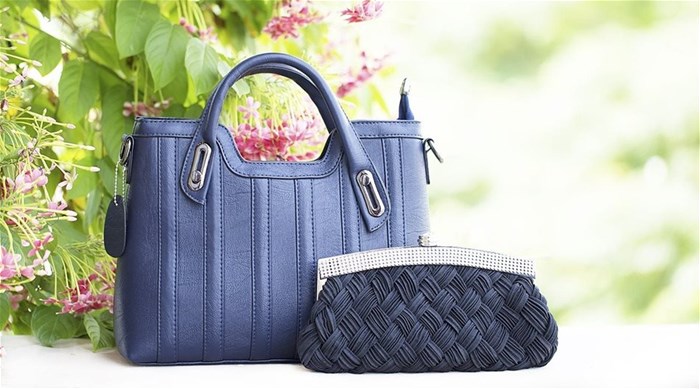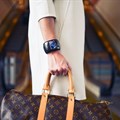Despite a weak economy, the trading densities of stores selling luxury brands in South African shopping centres are dwarfing all other dominant merchandise categories.
That emerges from the newly launched Clur Luxury Brands Index. This is an addition to the Clur Shopping Centre Index which tracks performance for listed and unlisted property funds at more than 4 million square metres of prime retail space across South Africa and Namibia.
Belinda Clur, managing director of Clur International, whose indices help property asset managers to optimize trading, says the index for all centres for the second quarter of 2023 showed annualised trading density at R39 879/sqm, a growth of 8,4% on the June 2022 figure.
“The luxury brands index shows trading density at R356,851/sqm. That outperforms the all centres index by a massive 795%. Growth in the sector at 15,8% was 7,4% better than that for all centres and beat the June CPI by 10,4%. Translating into US dollars, this density at approximately $20 000/sqm has impressed international observers.”
Clur says the outstanding performance of luxury brands as a category can be gauged from trading densities for other leading sectors.
“Barrows and kiosks are next best with trading density of R170,439/sqm. Then comes accessories, jewellery and watches at R116,132/sqm and technology at R104,405/sqm.
“The demand for luxury brands points to an under traded position in centres, suggesting a favourable path for responsible new space take-up. That aligns with findings that elsewhere in Africa the sector is highly under traded. According to Statista, a global business intelligence and data platform, the African luxury goods market is expected to grow by 6.6% to $6bn between 2023 and 2028.”
Clur says there is a growing aspirational middle class set to add to the number of wealthy individuals across Africa, as well as increasing lipstick index behaviour in the harsh economic climate.
“There is also significant growth in the market for pre-owned luxury goods. Luxity, SA’s biggest pre-owned luxury seller, has predicted that by 2027 one in 10 luxury items in Africa will be pre-owned.
“Our market watch via our Clur Media Hub has also noted that a two-way street has developed between Africa and the rest of the world. It’s not only about demand in Africa but also the supply of luxury goods – specifically fashion, textiles, jewellery and art – from Africa.
“Statista has said the African fashion market is expected to grow by 58% to $10bn between 2023 and 2027. Our observation is that consumers who may not be able to afford fancy cars and houses show their status through an appreciation of quality, tailoring, style and endurance in their clothing and accessories.”
Clur says studies indicate that globally the core personal luxury goods segment has recovered to 2019 levels or better.
“According to the 21st Bain & Company – Altagamma Luxury Study, prospects for the sector are positive, with an expected rise of over 50% to an estimated $600bn market value in 2030. This is coupled with an anticipated luxury market consumer base expansion from 400 million to 500 million people in 2030. In response, luxury brands are investing in the future, with new luxury markets - such as India, Southeast Asian and African countries - identified as having significant potential.”
Secondhand luxury market
Clur says predictions for the global secondhand luxury market are for 64% growth to $51bn between 2022 and 2028.
“The resale market for top luxury brands in SA is buoyant and luxury items are increasingly viewed as a good alternative investment independent of other asset class cycles. This can be expected to entrench further, given a growing aspirational market dealing with a harsh economy.”
Clur says the luxury sector is evolving, highlighted by aspects of fragmentation and fluidity.
“Luxury brands need to be chameleons as they traverse these market shifts. Social media and influencers are driving democratisation of the sector and associated brands are becoming more mainstream.
“That has a dilutionary effect, with brand equity moving into a constant state of flux. Then in contrast to democratization, where loud luxury speaks through bold logos on items, a shift towards exclusivity is again emerging. This is a quiet luxury; sleek, understated, expressed in fashion through exceptional materials, muted tones, subtle beadwork, quality stitching, elegant appliques and inconspicuous logos.”
Shift in values
Clur says there is also a shift in values, from a simple physical to a more complex emotional luxury.
“Values around status, prestige and exclusivity are being replaced by those around ethics, circular economics, bio-innovation, respectful technology, inclusivity and personalisation. This is being driven by Gen Z and millennials who are expected to make up 75% of luxury goods buyers by 2026.
“These new values are creating unexpected brand unions, such as a collaboration between Tiffany as jewellers and Spalding sports gear. They are also drawing unexpected brands into the limelight. Last year E-Bay hosted a two-day luxury exchange pop-up in New York’s Diamond District.
“There’s also a change in figureheads with models and movie stars replaced by activists, bloggers and more relatable personalities. That in turn is leading to a mix of dressing styles, with formal wear coupled with trainers, luxury coats with casual leggings and pencil skirts with athleisure tops. Significantly Clur index results show growth in trainers and athleisure sectors.”
Clur says that in the realm of new luxury, value is placed on the whole experience, the brand story and provenance of the product, not merely the final item.



































